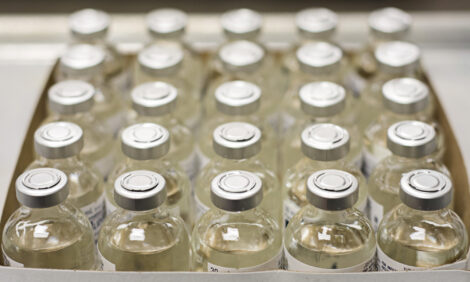



2019 has been a devastating year for barn fires in the US
The Animal Welfare Institute recently completed its year-end tally of barn fires and reported that at least 469,000 farm animals have perished so far this year, triple the number of deaths compared to 2018.At least 469,000 farm animals have perished in potentially preventable barn fires so far this year, according to an Animal Welfare Institute (AWI) analysis of media reports. Since 2017, at least 2 million farm animals have died in barn fires, a devastating toll that should sound the alarm for producers to prioritise fire prevention and suppression.
“Such a massive loss of life that involves extreme suffering would be considered horrific and unacceptable if the victims weren’t animals raised for food,” said Dena Jones, director of AWI’s farm animal programme.
“Even millions of deaths are of little consequence or concern, however, to an industry that produces animals by the billions and views the life of an individual animal as having virtually no value.”
Though these numbers are grim, they likely do not represent the full scale of the tragedy. That is because the number of fires and animal deaths in recent years likely exceeds totals reported by the media, since municipalities are not generally required to report barn fires, and some companies decline to release the information to the public. For example, Cal-Maine Foods, the country’s largest producer and marketer of eggs sold in the shell, failed to disclose the number of hens killed in a Kansas fire last month that destroyed an entire barn, which probably housed many thousands of birds.
Barn fires this year involved multiple animal species, including cows, pigs, chickens, ducks, and turkeys. They were housed at a variety of locations, from small hobby farms to large commercial facilities. While the cause of most fires is unknown, many are believed to result from electrical malfunctions or improperly placed or faulty heating devices. In other cases, arson is the suspected cause.
Michigan reported the most animal deaths from fires (253,000 deaths in 14 fires), followed by North Carolina (42,500 deaths in five fires), and Pennsylvania (42,000 deaths in 14 fires). Of the 178 barn fires tracked by AWI this year, Ohio reported the most (20), followed by New York (19).


Pigs
Fires this year with the highest number of pig deaths were:
- 15 March: 4,000 pigs at Holden Farms in Naples, WI; cause believed to be electrical.
- 21 September: 4,000 pigs at Billig Farms in Lynn Township, PA; cause unknown.
Poultry
Based on AWI’s analysis, 98 percent of the animals killed in barn fires in 2019 were birds, mainly chickens raised for meat and egg-laying hens. Since 2017, more than 250,000 meat chickens and 1.8 million hens have been killed in barn fires. Birds die in such large numbers as a result of factory-farming practices that confine tens to hundreds of thousands of animals under one roof.
In 2019, the five barn fires with the highest number of farm animal deaths (as reported by the media) all involved birds:
- 30 April: 250,000 hens at Herbruck’s Poultry Ranch in Iona County, MI; cause unknown.
- 2 April: 37,000 hens at A & L Farms in Upper Bern, PA; cause reported as faulty ventilation fan component.
- 7 June: 25,000 meat chickens at a Wayne Farms contract farm in Goshen, AL; cause reported as arson.
- 5 April: 22,000 meat chickens at a Tyson Foods contract farm in Tecumseh, NE; cause reported as arson.
- 4 June: 22,000 hens at a farm in Winston County, MS; cause unknown.
Currently, there are no laws or regulations in the United States designed to protect farm animals from barn fires. AWI is urging poultry trade associations, including the National Chicken Council and United Egg Producers, to revise their animal care guidelines to require that all producers comply with the National Fire Protection Association’s Fire and Life Safety in Animal Housing Facilities Code. Among the association’s recommendations: installing fire alarms and implementing a disaster/emergency management programme.
“If poultry companies are going to cram birds by the thousands into massive sheds with no chance of escape, they should be obligated at the very least to take precautions to prevent the animals from burning to death,” said Jones.
More information about barn fires and how they can be prevented is available in AWI’s 2018 barn fire report.








